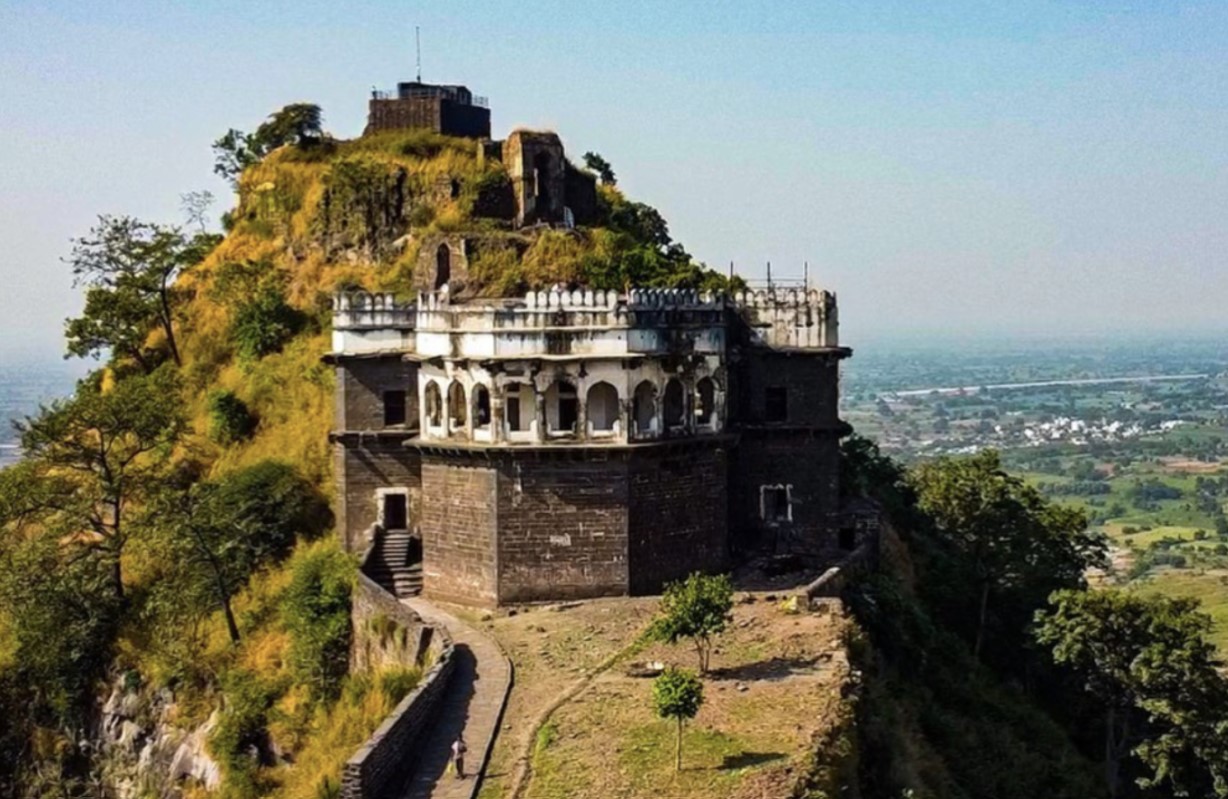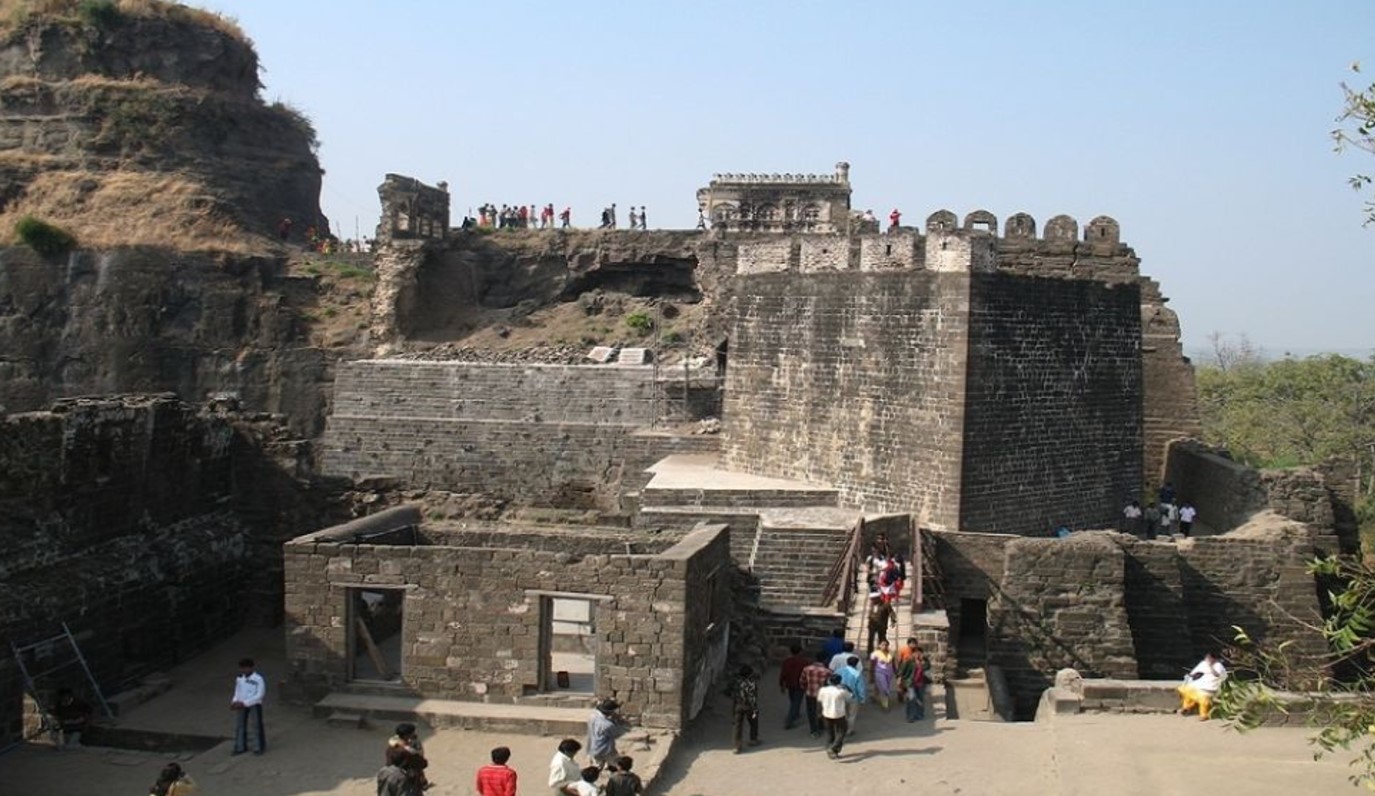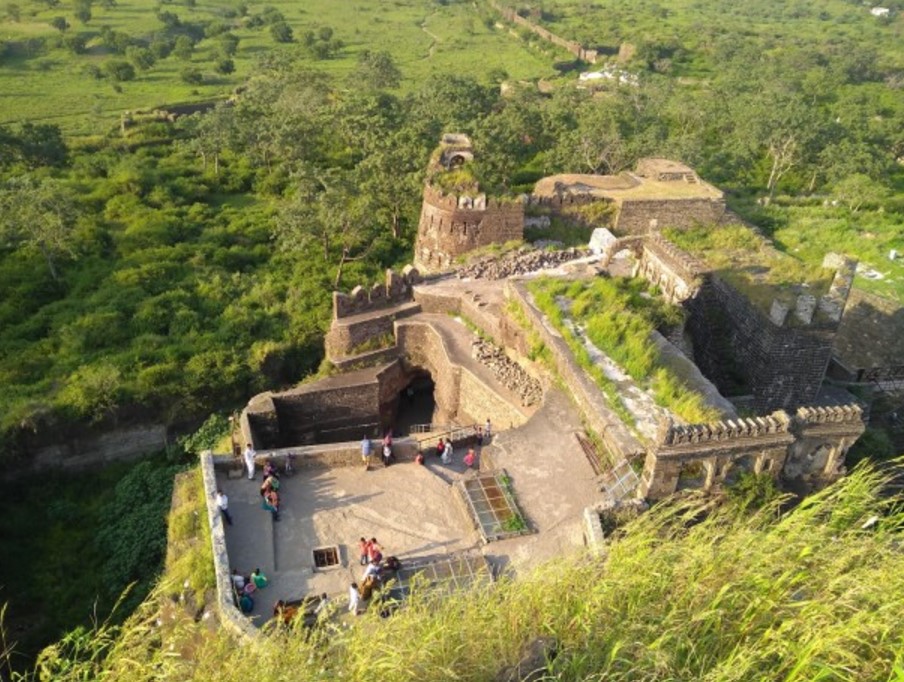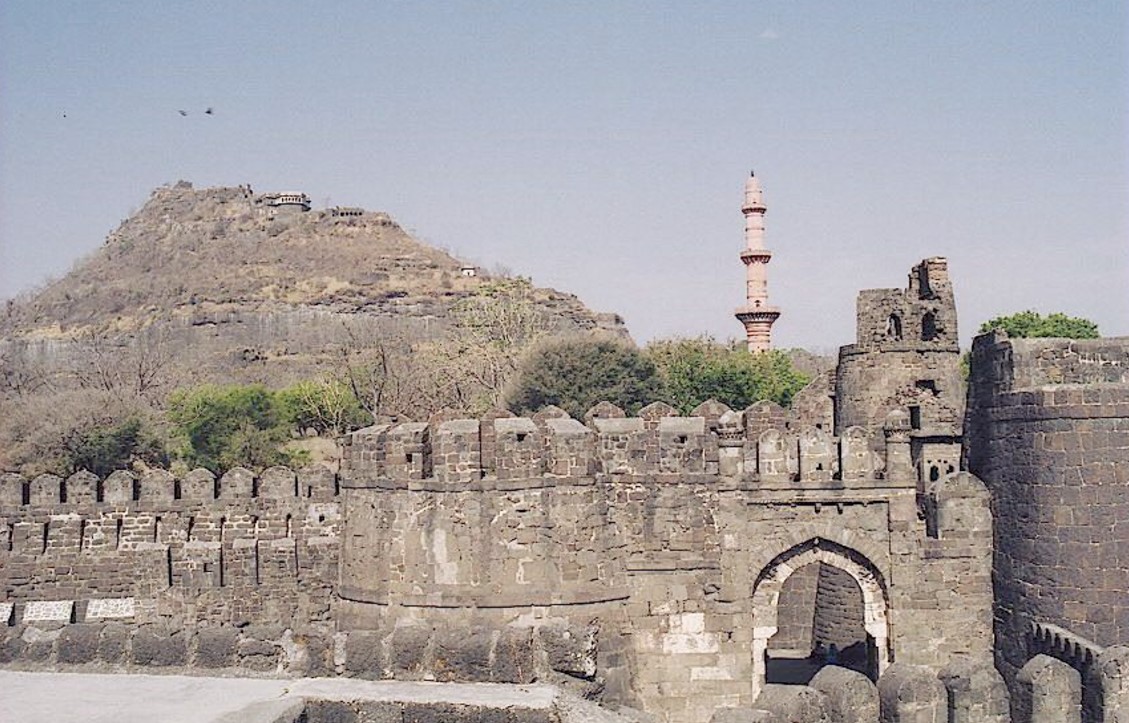Daulatabad Fort, located in Maharashtra, India, is one of the most impressive architectural and engineering marvels of ancient times. Carved out of solid rock with towering cliffs rising 50 meters high, this fortress stands as a testament to human ingenuity and resilience. Built in the 12th century by the Yadava dynasty, it has a long history of strategic importance and has played a pivotal role in India’s history. Let’s explore many mysteries with archeology.dulichvn.net
The Architectural Brilliance of Daulatabad Fort
A Fortress Carved from Solid Rock
One of the most striking features of Daulatabad Fort is that it was carved entirely out of solid rock. This monumental feat of engineering created a nearly impenetrable stronghold. The sheer vertical cliffs and strategically designed pathways make it almost impossible for invaders to breach its defenses. The fortress appears as though it was born from the Earth itself, blending seamlessly into its natural surroundings.

The Ingenious Defensive Mechanisms
The fort’s defense system is nothing short of ingenious. It features a series of moats, battlements, and gates designed to confuse and trap enemies. The entrance to the fort includes narrow pathways, false doors, and sharp turns that made it easy to ambush attackers. The moat surrounding the fort was filled with crocodiles, adding another layer of protection.
The Strategic Location
Perched on a hill, Daulatabad Fort offers panoramic views of the surrounding countryside. This strategic location allowed defenders to spot approaching enemies from miles away. The fort’s position also made it an ideal control point for trade routes in the Deccan region, further enhancing its importance.
See more: Phrygian Statue of the Goddess Cybele or Agdistis
The Historical Significance of Daulatabad Fort
Origins and Early History
Daulatabad Fort was initially built in the 12th century by the Yadava dynasty and was known as Devagiri. It quickly gained a reputation for being one of the most secure forts in the region, becoming a symbol of power and prosperity.

A New Capital for the Tughlaq Dynasty
In the 14th century, Sultan Muhammad bin Tughlaq of the Delhi Sultanate famously moved his entire capital to Daulatabad. This decision, though ultimately unsuccessful, highlighted the fort’s strategic and symbolic importance. The move was intended to centralize the administration and bring the southern regions under tighter control.
A Center of Power for Centuries
Over the centuries, Daulatabad Fort changed hands many times, being ruled by various dynasties, including the Bahmani Sultanate and the Mughals. Each ruler contributed to the fort’s architecture and defense systems, adding layers of complexity to its already formidable design.
Exploring the Features of Daulatabad Fort
The Chand Minar
One of the most iconic structures within the fort is the Chand Minar, a 30-meter-high tower built in the 15th century. This ornate minaret, painted in bright colors, was constructed as a symbol of victory. It stands as a striking contrast to the rugged fortifications around it.

The Baradari and Royal Chambers
The royal chambers and the baradari (pavilion) within the fort showcase the luxurious lifestyle of its rulers. These areas were designed with intricate carvings and offered stunning views of the surrounding landscape.
The Secret Escape Tunnels
The fort also features secret escape tunnels that allowed rulers and their entourage to flee during times of siege. These tunnels, carved deep into the rock, are a testament to the foresight and planning that went into building this fortress.
See more: The Shell Grotto in Margate An Underground Enigma of Shells
Why Daulatabad Fort Still Captivates Visitors Today
A Testament to Human Ingenuity
Daulatabad Fort remains a symbol of human ingenuity and perseverance. Its construction, entirely out of solid rock, and its advanced defense mechanisms are marvels of ancient engineering.

A Window into History
For history enthusiasts, visiting Daulatabad Fort offers a glimpse into India’s rich past. Each layer of the fort tells a story of its rulers, battles, and the cultures that thrived within its walls.
A Stunning Visual Experience
The breathtaking views from the top of the fort, combined with its dramatic architecture, make it a favorite destination for photographers and travelers seeking awe-inspiring sights.
Tips for Visiting Daulatabad Fort
Best Time to Visit
The ideal time to visit Daulatabad Fort is during the winter months, from November to February, when the weather is cool and pleasant. Avoid the summer heat, as the rocky terrain can become scorching.

What to Bring
Wear comfortable shoes, as exploring the fort involves climbing steep pathways and stairs. Bring water, sunscreen, and a hat to protect yourself from the sun.
Exploring Nearby Attractions
Combine your visit to Daulatabad Fort with a trip to the nearby Ellora Caves, another UNESCO World Heritage Site. The proximity of these two landmarks makes for a perfect day of historical exploration.
Conclusion: A Fortress That Defies Time
Daulatabad Fort is more than just a historical site; it is a symbol of resilience, innovation, and the enduring spirit of ancient India. From its towering cliffs and ingenious defenses to its rich history and cultural significance, this fortress continues to captivate the imagination of all who visit.
For those seeking an unforgettable journey into the past, Daulatabad Fort offers a perfect blend of architectural grandeur and historical depth, standing as a timeless marvel carved into the heart of India’s rugged landscape.

CÁC TIN KHÁC
Mark Twain & Olivia Langdon: A 36-Year Love Story Filled with Laughter and Devotion
The Tollund Man: A 2,400-Year-Old Mystery Preserved in a Danish Bog
Skara Brae: Scotland’s Hidden Neolithic Village
Porta Nigra: The Hidden Depths of Trier’s Iconic Roman Gate